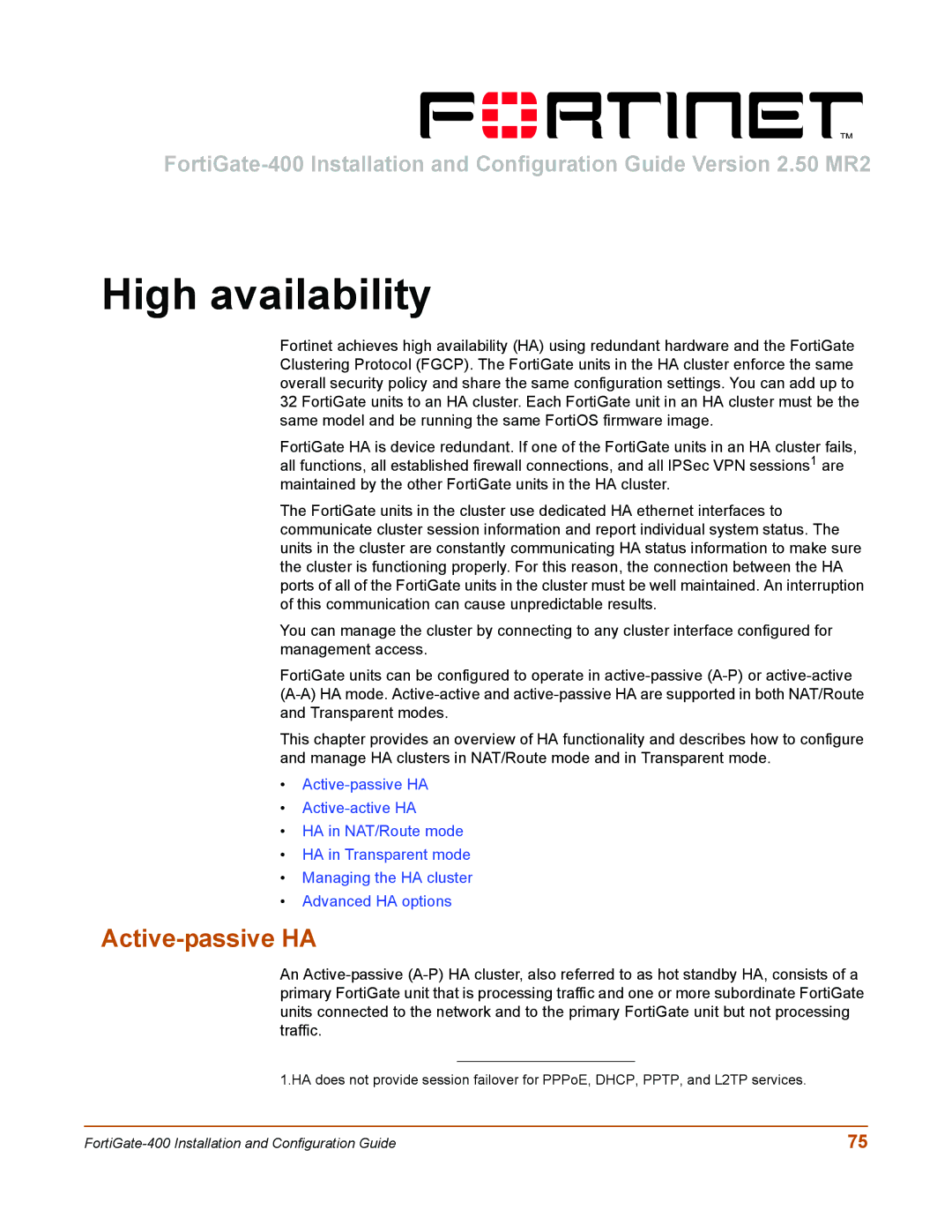
High availability
Fortinet achieves high availability (HA) using redundant hardware and the FortiGate Clustering Protocol (FGCP). The FortiGate units in the HA cluster enforce the same overall security policy and share the same configuration settings. You can add up to 32 FortiGate units to an HA cluster. Each FortiGate unit in an HA cluster must be the same model and be running the same FortiOS firmware image.
FortiGate HA is device redundant. If one of the FortiGate units in an HA cluster fails, all functions, all established firewall connections, and all IPSec VPN sessions1 are maintained by the other FortiGate units in the HA cluster.
The FortiGate units in the cluster use dedicated HA ethernet interfaces to communicate cluster session information and report individual system status. The units in the cluster are constantly communicating HA status information to make sure the cluster is functioning properly. For this reason, the connection between the HA ports of all of the FortiGate units in the cluster must be well maintained. An interruption of this communication can cause unpredictable results.
You can manage the cluster by connecting to any cluster interface configured for management access.
FortiGate units can be configured to operate in
This chapter provides an overview of HA functionality and describes how to configure and manage HA clusters in NAT/Route mode and in Transparent mode.
•
•
•HA in NAT/Route mode
•HA in Transparent mode
•Managing the HA cluster
•Advanced HA options
Active-passive HA
An
1.HA does not provide session failover for PPPoE, DHCP, PPTP, and L2TP services.
75 |
